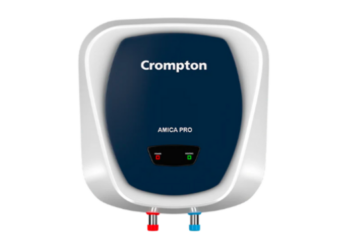In January 2020, Google announced it will phase out the third-party (3P) cookie in the Chrome browser by 2022. This unsurprising announcement marks the natural death of a technology that had already been deemed obsolete since Firefox and Safari discontinued it earlier. One could instead say that Google, has been rather clement in its approach by providing the digital advertising industry adequate time to transition and move on from an arcane legacy.
However, a shift in structural echelons, and the obliteration of the former facilities of multi-touch, cross-site measurement, and audience delivery, also presents its own set of challenges for the marketers by taking away a convenient familiarity that would now become hard to replicate. Few points that are worthy to note about the transition are-
- The threat to third party ad platforms
In 2018, the third-party audience data & data use solutions market was estimated to be $19.2 billion in the US alone(Source). For India, that number though smaller would still be substantial for its advertising industry. Third-party cookies are mostly used for ad retargeting and behavioral advertising and their discontinuation restricts the ways dependent ad platforms and marketers can target and advertise to web users. E.g. You searched for a particular item on an eCommerce platform and are shown advertisements of the same item on a different website just seconds later. This particular real-time communication between unrelated websites is thanks to third-party cookies. Without 3P cookies, they would have to find other ways to identify different users for retargeting ads.
- Increased reliance on first-party data
Given the lack of third-party data, reliance on first-party data (publishers’ data) would emerge as the primary source of information about the users and their behavior. Publishers would need creative solutions to extract trends and insights for the benefit of the entire advertising value chain. To combat this caveat, publishers such as Vox and Insider have built databases that contextualize each of their pages indicating why a particular user visited a particular page. (Ref 1) Closer home, Times Internet’s investment in Colombia can now realize greater value.
However, publishers would also face a challenge in making this data available to their monetization partners. They would now need to put in place quality control mechanisms to ensure seamless adaptation and usage by external partners, unlike earlier when only internal stakeholders were involved.
- Rise of contextual advertising
Despite the quantum of insights generated from 3rd party data being greater, 1st party data is still acclaimed as more contextual and audience-led. Early reports have always indicated that the contextual targeting from publishers’ first-party data has generated more efficient campaigns than individual targeting. With premium publishers, the most likely to benefit, Premium publishers such as Times Internet are expected to reap benefits from its investment in Colombia, the ad-tech platform. E.g. Commscore uses contextual targeting in their solutions such as Activation Solutions and have entered into alliances with companies such as LiveRamp (earlier part of Acxiom) to build next-generation television and video advertising measurement. (Source)
- Increased use of data cleanrooms
Data clean rooms are cloud-based privacy safe places where first-party data is exposed to data from campaigns. E.g. Unilever and Procter & Gamble are reported to be building data cleanroom capabilities. (Ref 5) Data cleanroom methods are promising to overcome limitations posed by the death of third-party data, however, they pose a challenge of being too expensive restricting use to deep-pocket advertisers.
- Surge in private contracts between advertisers and publishers
Publishers and advertisers are the repositories of first-party data about users’ habits and behavior. The data can be matched from two entities similar to the process of data clean rooms. This process may well be adopted by relatively smaller advertisers. Moreover, this would enable premium publishers such as Times Internet to charge a premium and strengthen relationships with advertisers directly.
In India, programmatic ad spending is expected to reach ~$450 million by 2021, and post third party cookies phase-out growth can be expected to be driven by programmatic guaranteed and private auction deals. (Source) Programmatic guaranteed and private auction deals may experience an initial surge driven by advertisers’ ability to gain more from publishers’ data. because advertisers stand a chance to customize audience segments. However, advertisers may switch back to other contract types when their performance & safety is proven and standards are more clearly defined.
Preferred deals would be favored by advertisers who are relatively new entrants and are more skeptical of inventory or by established advertisers with non-premium publishers because the deal type provides an opportunity to advertisers to first look and then buy the inventory.
- New alliances among premium publishers such as Times Internet
The transition from third-party cookies provides an opportunity for publishers to claim greater revenue share in the advertising value chain. The greatest challenge is twofold- while the lack of uniform identifiers makes audience data dependent on publisher-provided insights, the importance of trust and publisher credibility has emerged as paramount. If the challenge is not met with initiatives by publishers then private platforms such as Facebook and Google will get even more of the ad spend.
Due to the loss of cross-site data, it is imperative that publishers find a way to share data with each other in a privacy-compliant manner and a programmatically enabled way to compensate buyers. In an ideal scenario, publishers will figure out a standardized solution that will create a common language around data that marketers can understand from publisher to publisher. E.g.- in Europe publishers like TL Group and ProSiebenSat.1 Media SE is planning to enter login alliances enabling people to use single accounts across multiple sites.
This is not unprecedented in the Indian media industry where publishers have collaborated in the past to increase the share of digital platforms. Network 18 collaborated with Times Internet’s Colombia Audience Network as a publisher partner. (Source) This is now an opportunity for associations such as Digital News Publishers Association (DNPA) to come forward with a standardization solution.
- Agencies are expected to flourish
Marketers are expected to consolidate their buys within a few big social networks and premium publishers due to limited audience level transparency. Hence, programmatic guaranteed deals between agencies and premium publishers might become a major negotiating tactic. E.g. Reportedly OMG has already negotiated over 50,000 deal IDs across its clients.(Ref 6)
However, different agencies would utilize their respective strengths to steer through early periods of the post-third party data era. IPG’s $2 billion acquisition of Acxiom in 2018, can now work as to the agency’s advantage for activation solutions with only first-party data.(Source)
Premium publishers such as Times Internet are expected to support the agencies with programmatic guaranteed deals driven by its pervasive reach to ~75% of the country’s digital population, diversified portfolio and Machine Learning enabled ad-tech platform, Colombia Audience Network.
- Other alternatives to third party cookies
- Universal IDs and similar technologies
Several companies are trying to create technologies that will break the walled gardens enabling sharing of audience information in a privacy-compliant manner. Pixel syncing is one circumventing method to the problem posed by phase-out of third-party cookie data. However, the process involves a large number of third-party requests on webpages, slowing down the user’s experience.
IAB lab’s Digitrust seeks to create a universal user token that will store the conventional cookie data within it and would allow members to share this data. Another company ID5, an independent identity solution for digital advertising, released its Universal ID available to publishers and ad tech platforms.
- Standardizations and related methods
Some firms are developing standardized ways of identifying and storing user data without using third-party cookies. E.g. Criteo launched a retail media solution that works more closely with retailers to gather first-party data and use it for targeting.(Source) Similarly, Google is trying to develop a solution such as privacy sandbox and FLoC (Federated Learning of Cohorts)
- Others
Probabilistic identity graphs utilizing distinct data sets together with algorithms identifying the same user across the multi-screen digital landscape can be used. This method creates statistical connections between a user and any number of devices based on non-authenticated attributes like IP, device type, browser/OS etc, as opposed to deterministic matching based on authenticated/PII attributes like login, email.
While any of the solutions discussed above or few others may work in the long term, it’s our belief that in the short term all of the solutions will co-exist in different markets based on geography, industry stage and nature of interaction among various stakeholders. While we, at Times Internet, are actively engaging in dialogues with vendors, customers and partners to work towards mutually beneficial solutions for the advertising ecosystem, we remain flexible and open in our approach to capitalize on the opportunities that may present themselves.
Authored by Vivek Pandey -VP, Revenue Strategy, Colombia Audience Network.
















